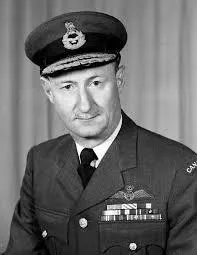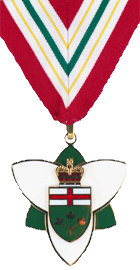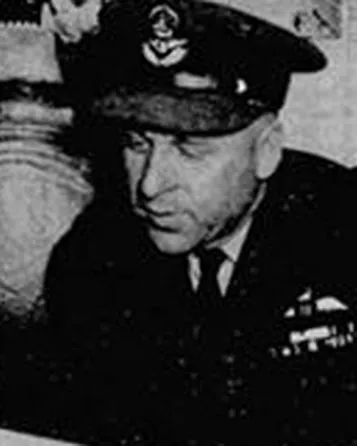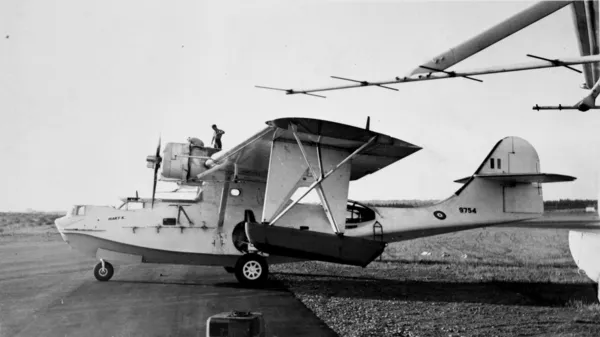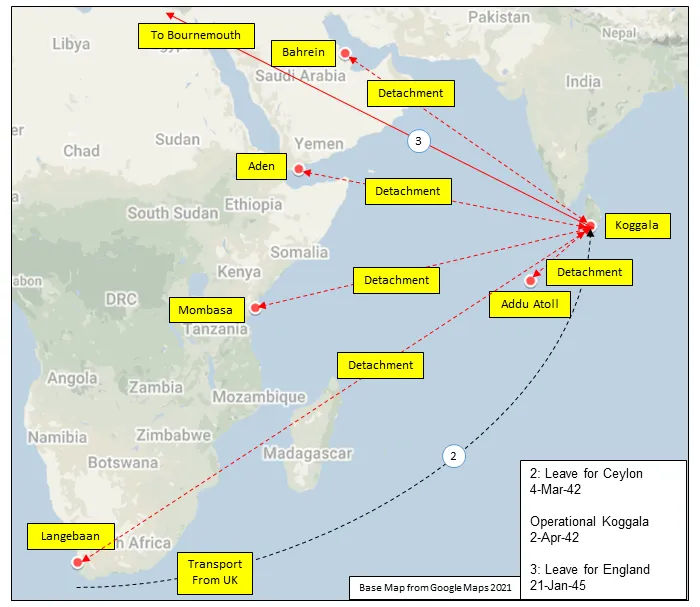Citation Order of Canada

Member of the Order of Canada
Awarded on: October 21, 1999
Invested on: February 09, 2000
A Second World War hero, he is known as the "Saviour of Ceylon". Retiring from the Royal Canadian Air Force with the rank of Air Commodore, he went on to serve twenty-two years with the 400th Air Reserve Squadron. He also joined York University as Executive Officer in the Faculty of Administrative Studies. In his retirement, he continues to be active in many military and charitable organizations. Governor General of Canada
Citation Distinguished Flying Cross

This officer was the first to sight and report the approach of the Japanese naval forces which attacked Ceylon. He did not return from his mission, but his timely warning enabled preparations to be made which resulted in considerable losses to the enemy forces. Only two days before this flight he had arrived from England where he had achieved a long record of operational successes.
Public Record Office Air 2/8951
Catalina AJ155, 413 Squadron, enemy action, aircraft shot down and crashed 400 miles south of Ceylon.
Birchall and his crew were on a reconnaissance flight in Canso aircraft AJ 155 QL-A and spotted Admiral Nagumo's Task Force of the Japanese Fleet steaming towards Columbo Ceylon (Sri Lanka). This same task force had participated in the attack on Pearl Harbour and included five aircraft carriers. As a significant portion of the Royal Navy's Eastern Fleet was at anchor there, another surprise attack could have resulted in a similar catastrophic loss for the British and significantly strengthened Japan's position in the Pacific.
Birchall and his crew managed to get a warning message out before being attacked and shot down by six A6M2 Zero fighters from the Japanese aircraft carrier "Hiryu". The Japanese still proceeded with an attack on Ceylon in what was known as the "Easter Sunday Raid" but Birchall's action gave advance warning to the British Fleet, averting disaster and after which Squadron Leader Birchall was known as the "Saviour of Ceylon"
Leonard J. Birchall-the "Saviour of Ceylon"
On 4 April 1942, Squadron Leader Leonard J Birchall led Royal Canadian Air Force (RCAF) Squadron 413 on a reconnaissance flight to an observation position 250 miles (400 kilometres) south of Ceylon. Birchall's squadron of Catalina "flying boats" had just completed a tour of patrol duty over the convoy route from Britain to the Soviet Union known as the "Murmansk Run"
During the patrol, RCAF Squadron 413 did not encounter any vessels. As the squadron was returning to the British naval base in Ceylon, Squadron Leader Birchall sighted a small dot on the southern horizon. Birchall changed course, while the rest of his squadron turned for home. As his plane approached the target, he was able to identify it as a Japanese task force. Japanese aircraft spotted the RCAF Catalina as it approached the fleet. Despite heavy enemy fire from anti-aircraft guns and Japanese fighter planes, Birchall conducted a low-level flight to identify the Japanese ships in the task force. It consisted of five aircraft carriers and four battleships supported by several cruisers, destroyers, and troopships.
Squadron Leader Birchall immediately began sending coded transmissions to the British base in Ceylon. According to regulations, units were to send each transmission three times. Birchall was in the middle of the third coded transmission when anti-aircraft fire destroyed the radio and seriously damaged his Catalina. After crash landing his plane in the ocean, Birchall and his crew were taken prisoner by the Japanese.
The Japanese brutally interrogated Birchall and his crew, who insisted that they had not had time to send any transmissions. When questioned about the strength of British forces in Ceylon, Birchall told his captors that he had no knowledge of the British defences because his squadron had only been posted in Ceylon for a day. Birchall and his crew were taken aboard the Japanese Imperial Navy carrier Akagi and were later transported to Japan. As a result of Birchall's heroic actions, the British were able to repulse the Japanese assault. The Japanese suffered heavy losses, losing 50 fighters and 50 bombers in the attack before retreating.
In captivity, Birchall proved to be a champion of prisoner's rights in the brutal conditions of the Japanese prisoner-of-war camps. He repeatedly endured savage beatings by Japanese guards when he intervened to protect prisoners from torture or when they were denied medical care.
Squadron Leader Birchall was awarded the Distinguished Flying Cross for his actions, and was later given the Order of the British Empire for his leadership and courage while in captivity. Prime Minister Sir Winston Churchill declared that Birchall had made "one of the most important single contributions to victory." Loyal Edmonton Regiment Military Museum
